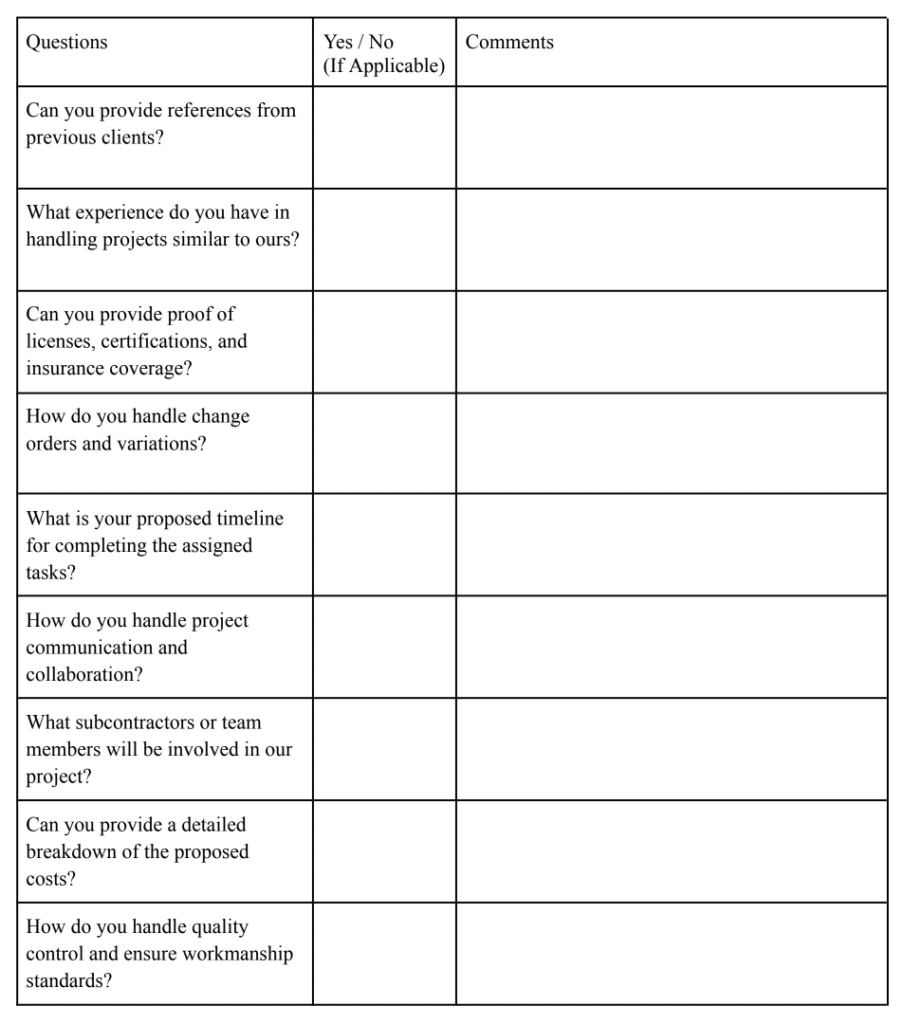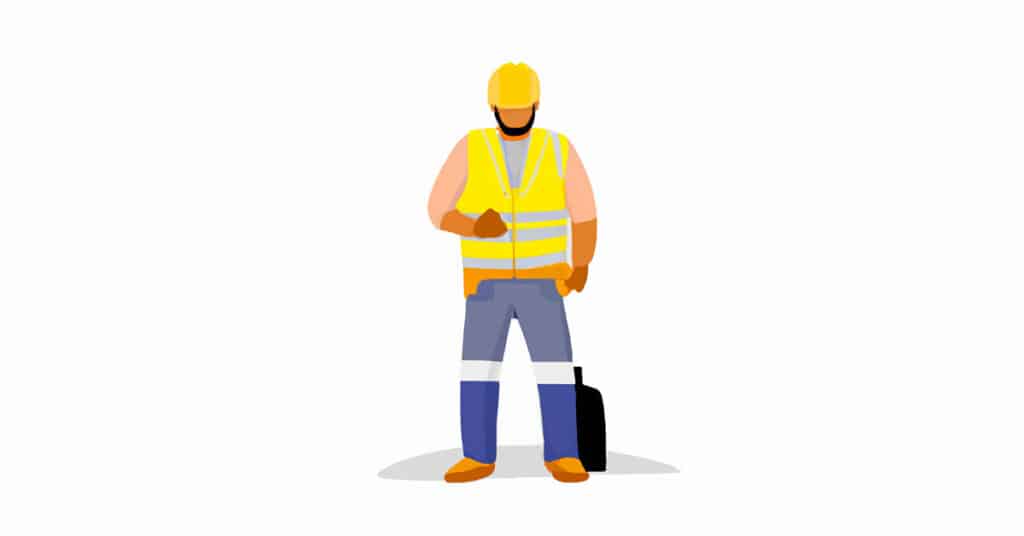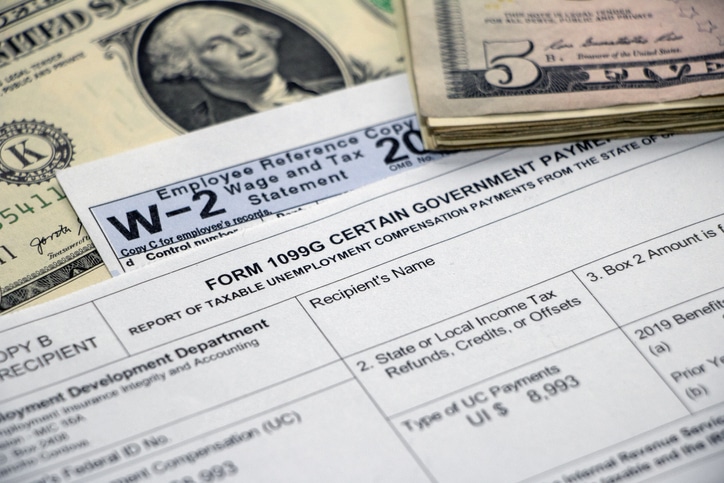Hiring the right subcontractor is crucial to ensuring a smooth and successful project execution. But, navigating the hiring process can be daunting, especially if you’re not familiar with the ins and outs of subcontractor selection.
So, in this comprehensive guide, we’ll take you through the process of hiring a subcontractor, equipping you with the knowledge and tools you need to make informed decisions. Whether you’re new to hiring subcontractors or looking to refine your process, this guide will cover everything you need to know.
We’ll provide practical tips, share real-life examples, and offer expert advice to empower you throughout the hiring journey. No matter the size or complexity of your project, this guide will help you navigate the hiring process confidently and efficiently.
So, whether you’re in search of an electrical contractor, a plumbing specialist, or any other trade-specific subcontractor, this guide will equip you with the knowledge and resources to hire the right subcontractor for the job.
Let’s dive in!
What is a Subcontractor?
In the world of construction, subcontractors play a crucial role in getting the job done efficiently and effectively. So, what exactly is a subcontractor? Let’s break it down!
Defining the Role: A Subcontractor in Construction
A subcontractor is an independent professional or company that is hired by a contractor or project owner to perform specific tasks or provide specialized services within a larger construction project.
Think of a subcontractor as a specialist who brings a unique set of skills to the table. They’re like the superheroes of the construction industry, swooping in with their expertise to handle specific aspects of the project.
They’re responsible for completing designated portions of a project, such as electrical work, plumbing, carpentry, painting, or HVAC installation. Subcontractors are typically hired for their specialized knowledge, experience, and ability to handle specific trade-related tasks with precision.
Who Do Subcontractors Report To?
Subcontractors typically report to the general contractor or project owner. They are part of the larger project team and collaborate closely with other professionals involved in the construction process.
The general contractor oversees the project as a whole, coordinating the efforts of various subcontractors and ensuring that the project progresses smoothly.
What Does a Subcontractor Do?
When it comes to construction projects, subcontractors are the unsung heroes who bring their expertise and skills to the table. In this section, we’ll dive into the key roles and responsibilities of a subcontractor, shedding light on why they are essential to the success of your project.
Key Roles and Responsibilities of a Subcontractor
1. Specialized Task Execution
Subcontractors are responsible for handling specific trade-related tasks within a construction project. Whether it’s electrical work, plumbing, HVAC installation, or painting, they have the specialized skills and knowledge to execute these tasks efficiently and effectively.
2. Work Coordination
Subcontractors work closely with the general contractor or project owner to ensure seamless coordination.
They collaborate with other trades and professionals involved in the project to synchronize their tasks with the overall timeline and requirements.
3. Quality Workmanship
Subcontractors are committed to delivering high-quality work.
They bring their expertise and attention to detail to every task they undertake, ensuring that the assigned work is executed to the highest standards.
4. Material and Equipment Management
Subcontractors are responsible for managing the materials and equipment necessary for their specific tasks.
They ensure that the required materials are available on-site and coordinate with suppliers to procure them in a timely manner.
5. Compliance with Regulations
Subcontractors are well-versed in industry regulations and codes specific to their trade. They ensure that their work adheres to safety standards, building codes, and any other legal requirements related to their scope of work.
6. Progress Reporting
Subcontractors provide regular progress reports to the general contractor or project owner. These reports include updates on task completion, challenges faced, and any deviations from the original plan. This helps in maintaining transparency and addressing any issues promptly.
7. Problem-solving and Troubleshooting
Subcontractors are problem solvers. They have the experience and expertise to tackle challenges that may arise during their tasks.
Whether it’s finding creative solutions or troubleshooting issues, subcontractors are instrumental in overcoming obstacles and keeping the project on track.
8. Timeline Adherence
Subcontractors are responsible for meeting the designated deadlines for their tasks. They work diligently to ensure that their work is completed within the agreed-upon timeframe, contributing to the overall project schedule.
Where To Find Subcontractors
When it comes to finding the right subcontractor for your construction project, knowing where to look is crucial. In this section, we’ll explore various avenues where contractors can find reliable subcontractors for hire. Here are some places you can start your search.
1. Online Directories
Online directories such as Angi or Yelp provide a platform where subcontractors showcase their services and expertise. These directories often include reviews and ratings from previous clients, giving you valuable insights into their reputation and work quality.
2. Social Media Groups
Join industry-specific social media groups, such as Facebook groups or LinkedIn communities. These platforms offer opportunities to connect with subcontractors and engage in discussions related to the construction industry.
3. Industry Networking Events
Attend industry conferences, trade shows, and networking events, like the International Builders’ Show. These gatherings provide excellent opportunities to meet subcontractors face-to-face, learn more about their expertise, and build professional relationships.
4. Local Trade Schools
Contact local trade schools, vocational institutions, or apprenticeship programs, like Associated Builders and Contractors. These institutions often have connections with aspiring subcontractors who are looking to gain practical experience and establish themselves in the industry.
5. On-Site Referrals and Recommendations
Seek referrals and recommendations from other contractors or professionals working on construction sites. They may have collaborated with reliable subcontractors in the past and can provide valuable insights based on their firsthand experience.
Remember, these are just a few examples of where you can find subcontractors. It’s essential to explore multiple avenues and evaluate potential candidates based on their qualifications, experience, and fit for your specific project.
Tips for Finding the Right Subcontractor
Tip #1: Clearly Define Your Project Needs
Before reaching out to subcontractors, clearly outline the tasks and requirements of your project. Having a well-defined scope of work will help you find subcontractors with the right expertise and specialization.
Tip #2: Conduct Thorough Research
When considering subcontractors, take the time to research their backgrounds, previous projects, and client reviews. This will give you a better understanding of their capabilities and reputation.
Tip #3: Request and Check References
Don’t hesitate to ask subcontractors for references from previous clients. Reach out to those references to gather insights into their experience working with the subcontractor.
Tip #4: Interview and Evaluate
Schedule interviews or meetings with potential subcontractors. Use this opportunity to assess their communication skills, professionalism, and compatibility with your project team.
Tip #5: Review Licenses and Insurance
Ensure that subcontractors possess the necessary licenses, certifications, and insurance coverage required for their specific trade. This helps protect your project from potential liabilities.
Tip #6: Get Multiple Quotes
Request detailed quotes from multiple subcontractors. Compare the proposed costs, timelines, and inclusions to make an informed decision.
Remember, finding the right subcontractor is crucial for the success of your construction project. Take the time to explore various avenues, conduct thorough research, and evaluate candidates based on their qualifications and fit with your project’s needs.
Step-By-Step Guide For Hiring a Subcontractor
Hiring the right subcontractor is a crucial step in ensuring the success of your construction project. To help you navigate this process smoothly, we’ve outlined a step-by-step guide that covers the key stages involved in hiring a subcontractor. Let’s dive in.
1. Determine Project Needs
- Clearly define the tasks and scope of work required for your project.
- Identify the specific trade or expertise needed from a subcontractor.
- Consider the timeline, budget, and any other project-specific requirements.
2. Research and Identify Potential Subcontractors
- Utilize online directories, industry associations, and referrals to identify potential subcontractors.
- Consider their experience, expertise, and past project portfolios.
- Review their qualifications, licenses, and insurance coverage.
3. Prequalification and Due Diligence
- Prequalify potential subcontractors by conducting thorough background checks and verifying their credentials.
- Check references and reviews from previous clients.
- Evaluate their financial stability and track record.
4. Solicit Bids or Proposals
- Reach out to selected subcontractors and request bids or proposals for your project.
- Provide detailed information about the project requirements, timeline, and any other relevant details.
- Encourage subcontractors to ask questions and seek clarifications.
5. Evaluate Bids and Proposals
- Review and compare the bids or proposals received.
- Consider factors such as pricing, proposed timeline, past performance, and the subcontractor’s ability to meet your project’s specific needs.
- Look for value-added services, expertise, and a track record of successful project completion.
6. Select the Subcontractor
- Based on your evaluation, select the subcontractor that best aligns with your project’s requirements and goals.
- Notify the chosen subcontractor and express your intent to work together.
7. Negotiate Contract Terms
- Initiate contract negotiations with the selected subcontractor.
- Discuss pricing, payment terms, project schedule, scope of work, and any other relevant details.
- Ensure both parties have a clear understanding of the expectations and responsibilities.
8. Sign the Subcontractor Agreement
- Once negotiations are finalized, draft and sign a subcontractor agreement.
- Clearly outline the terms and conditions, including project scope, timelines, deliverables, pricing, payment schedules, and any relevant clauses or provisions.
9. Establish Communication and Collaboration
- Set up regular communication channels with the subcontractor, including meetings, progress updates, and milestones.
- Establish protocols for addressing any issues or changes that may arise during the project.
- Foster a collaborative environment to ensure smooth coordination and successful project execution.
10. Monitor Performance and Quality
- Regularly assess the subcontractor’s performance and adherence to project requirements.
- Monitor the quality of work being delivered and address any deviations promptly.
- Provide feedback and guidance as necessary to maintain high standards.
11. Manage Changes and Variations
- As the project progresses, there may be changes or variations in scope or requirements.
- Establish a change management process to address these modifications effectively.
- Communicate and agree upon any adjustments to the subcontractor’s responsibilities, timeline, or pricing.
12. Payment and Closeout
- Follow the agreed-upon payment schedule and ensure timely payment to the subcontractor.
- Review the subcontractor’s work upon completion and address any outstanding issues.
- Close out the subcontractor’s involvement in the project, including final documentation and sign-off.
By following this step-by-step guide, you can streamline the process of hiring a subcontractor and ensure a successful collaboration. Remember, effective communication, thorough vetting, and clear expectations are key to finding the right subcontractor for your construction project.
Questions To Ask When Hiring a Subcontractor
When it comes to hiring a subcontractor for your construction project, asking the right questions is essential to ensure a successful and smooth collaboration.
Here are ten important questions that you should ask potential subcontractors during the hiring process, along with reasons why each question is important:
Question #1: Can you provide references from previous clients?
Checking references allows you to gain insights into the subcontractor’s performance, reliability, and professionalism from those who have worked with them before.
Question #2: What experience do you have in handling projects similar to ours?
Understanding the subcontractor’s experience in similar projects helps assess their suitability for your specific needs and ensures they have the necessary expertise.
Question #3: Can you provide proof of licenses, certifications, and insurance coverage?
Verifying licenses, certifications, and insurance coverage ensures that the subcontractor meets the necessary legal requirements, providing protection and minimizing potential risks for your project.
Question #4: How do you handle change orders and variations?
Understanding the subcontractor’s process for managing changes and variations helps you assess their flexibility, adaptability, and ability to handle unforeseen circumstances that may arise during the project.
Question #5: What is your proposed timeline for completing the assigned tasks?
Clarifying the subcontractor’s timeline ensures alignment with your project schedule and helps manage expectations regarding project milestones and deadlines.
Question #6: How do you handle project communication and collaboration?
Effective communication and collaboration are vital for a successful project. Knowing how the subcontractor approaches communication, updates, and coordination helps establish clear channels and promotes efficient project management.
Question #7: What subcontractors or team members will be involved in our project?
Identifying the specific individuals who will work on your project allows you to assess their qualifications, experience, and capabilities, ensuring they align with your expectations and requirements.
Question #8: Can you provide a detailed breakdown of the proposed costs?
Having a clear understanding of the costs involved, including labor, materials, and any additional charges, helps you evaluate the financial feasibility and competitiveness of the subcontractor’s bid or proposal.
Question #9 How do you handle quality control and ensure workmanship standards?
Discussing the subcontractor’s approach to quality control helps ensure that their work meets industry standards and aligns with your expectations for craftsmanship and attention to detail.
Question #10: What is your process for resolving conflicts or addressing issues that may arise during the project?
Understanding the subcontractor’s conflict resolution process demonstrates their ability to address challenges in a professional and proactive manner, fostering a collaborative and problem-solving mindset.
Remember, these questions serve as a starting point for your discussions with potential subcontractors. Feel free to tailor them based on your project’s specific needs and requirements. Asking these questions will help you gain a better understanding of the subcontractor’s qualifications, communication style, project management approach, and overall fit for your construction project.
By asking these questions and considering the answers provided, you can make an informed decision when selecting a subcontractor who is aligned with your project goals and values.
Hiring a Subcontractor: A Checklist
Hiring the right subcontractor is a crucial step in ensuring a successful construction project. To help you streamline the process and keep track of important details, we’ve created a checklist for hiring a subcontractor. Feel free to download and use this checklist as a handy reference during the hiring process. Download our subcontractor checklist here.

How to Use This Checklist
- During the hiring process, ask these questions to potential subcontractors.
- Mark “yes” or “no” in the respective column based on their responses, if applicable.
- Utilize the “comments” column to jot down any additional notes or details for reference.
- Review the checklist as a whole to evaluate and compare subcontractors based on their responses and overall fit for your project.
By downloading our checklist, you can keep track of important details, compare subcontractors, and make an informed decision when hiring the right subcontractor for your project.
Important Things To Consider Before Hiring a Subcontractor
Before finalizing your decision to hire a subcontractor for your construction project, there are several key considerations that you should keep in mind. These considerations will help ensure that you are making a well-informed choice. Let’s explore some of the important factors to consider.
Is the subcontractor insured?
It is crucial to ensure that the subcontractor you hire has adequate insurance coverage. This includes general liability insurance, workers’ compensation insurance, and any other relevant coverage specific to their trade.
Insurance coverage protects you from potential liabilities and provides peace of mind in case of accidents, injuries, or property damage during the project.
Request proof of insurance from the subcontractor and verify the validity of their coverage.
Is the subcontractor licensed?
Licensing requirements vary depending on the trade and location. It is essential to confirm that the subcontractor holds the necessary licenses and permits required to perform the specific tasks involved in your project.
Licensing ensures that the subcontractor has met certain professional standards, undergone training, and possesses the expertise needed to execute their assigned work.
Verify the validity of the subcontractor’s licenses and certifications with the appropriate licensing authorities.
Is the subcontractor available?
Before finalizing your decision, assess the subcontractor’s availability. Consider their current workload, ongoing projects, and their ability to allocate sufficient time and resources to your project.
Ensure that the subcontractor can align with your project timeline and meet the agreed-upon deadlines.
Communicate clearly about the project duration and any specific time constraints to ensure that the subcontractor can commit to the required schedule.
Does the subcontractor have a good reputation and track record?
Research the subcontractor’s reputation in the industry by checking client reviews, testimonials, and references.
Consider their track record of successfully completing projects similar to yours. Look for evidence of quality workmanship, timely delivery, and adherence to project requirements.
Online platforms, industry associations, and local business bureaus can provide valuable insights into the subcontractor’s reputation and credibility.
Does the subcontractor have the necessary expertise and experience?
Assess the subcontractor’s expertise and experience in handling projects similar to yours.
Review their portfolio, past projects, and the complexity of work they have undertaken.
Evaluate their knowledge of industry regulations, codes, and best practices specific to their trade.
Consider the subcontractor’s ability to handle any unique challenges or requirements that your project may present.
What is the subcontractor’s approach to communication and collaboration?
Effective communication and collaboration are vital for successful project execution. Assess how the subcontractor communicates, responds to inquiries, and provides updates.
Evaluate their willingness to collaborate and work as part of a team, including their ability to coordinate with other trades and professionals involved in the project.
Consider their accessibility and responsiveness to ensure smooth communication throughout the duration of the project.
By considering these factors before hiring a subcontractor, you can make an informed decision and select a subcontractor who not only meets your project requirements but also aligns with your expectations and values.
Remember, thorough due diligence and careful consideration of these key factors will help you establish a strong working relationship with the subcontractor and contribute to the overall success of your construction project.
The Bottom Line on Hiring a Subcontractor
Congratulations! You’ve reached the end of our comprehensive guide to hiring a subcontractor for your construction project.
By following the step-by-step process outlined in this guide, you’re equipped with the knowledge and tools to confidently navigate the hiring process. Remember, the key is to clearly define your project needs, conduct thorough research, and establish effective communication and collaboration with your chosen subcontractor.
Hiring the right subcontractor brings a myriad of benefits to your construction project. From specialized expertise and cost-efficiency to enhanced quality control and risk mitigation, subcontractors play a vital role in achieving successful project outcomes.
To help you stay organized and stay on track, we have provided a helpful Hiring a Subcontractor Checklist. This checklist will serve as a valuable reference tool as you assess potential subcontractors, compare their qualifications, and make informed hiring decisions.
Now, armed with the knowledge and checklist in hand, it’s time to take the next step and find the right subcontractor who will contribute to the seamless execution of your project.
Good luck, and may your effective subcontractor management lead to outstanding results in your construction endeavors!
FAQs About Hiring a Subcontractor
Subcontractors are typically paid based on the terms outlined in the subcontractor agreement. While payment arrangements can vary, commonly used methods include the following.
- Lump sum payment: A predetermined amount is paid in a single installment upon the completion of the subcontractor’s work.
- Progress payments: Payments are made at specific milestones or upon the completion of predefined portions of the project.
- Time and materials: Subcontractors are paid based on the actual hours worked and the cost of materials used, with agreed-upon rates.
The payment terms should be clearly defined in the subcontractor agreement to avoid any confusion or disputes.
The term “1099 employee” is often used colloquially to refer to individuals who are classified as independent contractors. These individuals are not considered employees of the company but rather work as self-employed individuals or freelancers. They receive a Form 1099-MISC at the end of the year to report their income. However, it’s important to note that proper worker classification is determined by the nature of the working relationship and the applicable laws and regulations.
As an employer, you are required to issue a 1099-MISC form to a worker who is not your employee, such as a subcontractor, if you paid them $600 or more for their services during a tax year. This form is used to report income earned by the subcontractor, and it helps the subcontractor fulfill their tax obligations. It is important to keep accurate records of payments made to subcontractors and provide them with a copy of the 1099-MISC form by the designated deadline.
To issue a 1099-MISC to a subcontractor, follow these steps:
- Obtain the subcontractor’s completed Form W-9, which provides their taxpayer identification number (TIN) or Social Security Number (SSN).
- Collect and maintain accurate records of payments made to the subcontractor throughout the tax year.
- Use the information from the subcontractor’s Form W-9 to complete the 1099-MISC form.
- Next, send Copy B of the 1099-MISC to the subcontractor by January 31st of the following year.
- Finally, file Copy A of the 1099-MISC with the IRS by the designated deadline (usually the last day of February if filing by paper, or March 31st if filing electronically).
We recommend that you consult with a tax professional or refer to the official IRS guidelines for specific instructions on issuing 1099 forms.




